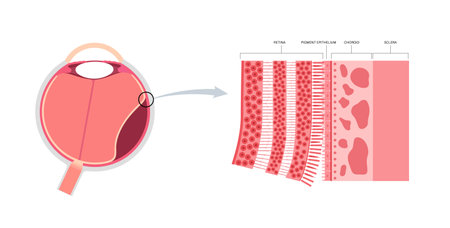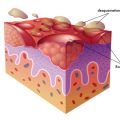Introduction: Cellulite Concerns Among British Women
Cellulite, a common skin condition characterised by a dimpled or lumpy appearance, is a topic of growing discussion among British women. Across the UK, cultural perceptions of cellulite have evolved significantly over recent years, shaped by media portrayals, changing beauty standards, and increased body positivity movements. Despite these shifts, cellulite remains an aesthetic concern for many, often associated with self-image and confidence. Recent surveys indicate that a significant proportion of British women experience cellulite at some stage in their lives, regardless of age or body type. Social media trends and celebrity culture further amplify awareness and scrutiny around this condition, contributing to both stigma and acceptance within different communities. As conversations around wellness and natural beauty gain traction in the UK, understanding the underlying causes of cellulite—particularly the roles of genetics and lifestyle—has become increasingly important. This article aims to unpack these factors while reflecting on current societal attitudes and the prevalence of cellulite among British women today.
Genetic Influences on Cellulite Formation
Recent advances in genetic research have illuminated how hereditary factors significantly impact the development of cellulite, particularly among British women. Studies indicate that genetics can influence skin structure, fat distribution, and connective tissue integrity—all of which are crucial contributors to the appearance of cellulite. Familial patterns show that if a mother or close female relative has pronounced cellulite, the likelihood increases for subsequent generations, suggesting a strong hereditary component.
Familial Patterns and Hereditary Factors
Cellulite is often observed to run in families, with twin studies underscoring the importance of genetic predisposition. Certain genes are linked to collagen production, vascular health, and fat storage efficiency, all of which collectively shape individual susceptibility. Below is a summary table presenting key hereditary factors relevant to British women:
Genetic Factor |
Impact on Cellulite |
Prevalence Among British Women |
|---|---|---|
Collagen Gene Variants |
Weaker connective tissue leads to dimpled skin texture | Moderate to high; prevalent in those with lighter skin types |
Fat Storage Genes (e.g., FTO) |
Affects subcutaneous fat accumulation in hips and thighs | Significant; commonly found in women of Northern European descent |
Circadian Rhythm Genes |
Influences metabolism and fat breakdown cycles | Notable; associated with lifestyle-induced expression differences |
Vascular Health Genes |
Poor microcirculation exacerbates fluid retention and swelling | Variable; higher prevalence noted in sedentary populations |
Ethnic Considerations Specific to the UK Population
The UK’s diverse demographic profile highlights important ethnic nuances. Research indicates that women of Caucasian descent—who make up a majority in Britain—are genetically more predisposed to visible cellulite than their counterparts from Asian or African backgrounds. This is partly due to differences in skin thickness, connective tissue structure, and fat layering.
The Interplay Between Genetics and Environment
While genetics set the baseline risk for cellulite formation, environmental factors such as diet, physical activity, and hormonal fluctuations can amplify or mitigate genetic tendencies. Understanding one’s family history allows British women to adopt more targeted prevention strategies and manage expectations regarding treatment efficacy.

3. Lifestyle Factors Specific to UK Habits
When examining cellulite formation among British women, it is crucial to consider lifestyle factors that are distinctively shaped by local culture and habits. The British diet, for instance, often features a high consumption of processed foods, refined carbohydrates, and saturated fats—think full English breakfasts, traditional pies, and takeaway fish and chips. Such dietary patterns can contribute to increased fat storage and diminished skin elasticity, both of which are linked with the development and visibility of cellulite.
Physical activity levels also play a significant role in this context. Despite public health campaigns promoting active lifestyles, many Britons still lead sedentary lives, particularly those working office-based jobs or commuting long distances. Limited physical movement reduces muscle tone and impairs lymphatic drainage, creating conditions that favour the accumulation of subcutaneous fat and the formation of cellulite.
Another pertinent aspect is stress management, which in Britain is often compounded by fast-paced urban living and unpredictable weather. Chronic stress has been shown to elevate cortisol levels, which can disrupt hormonal balance and negatively affect connective tissue structure—key factors in cellulite’s progression. Additionally, cultural norms around alcohol consumption, such as frequenting pubs or social drinking after work, may exacerbate fluid retention and impair circulation, further contributing to the issue.
In summary, understanding how British-specific lifestyle choices—ranging from dietary preferences to physical activity and stress coping mechanisms—interact with genetic predispositions offers deeper insight into why cellulite prevalence and severity might differ among UK women compared to other populations.
4. Environmental and Societal Contributions
When examining the formation of cellulite among British women, it is essential to consider not only genetics and lifestyle but also the unique environmental and societal factors at play within the UK. Regional influences such as climate, occupational trends, and fashion choices can significantly shape skin health and body composition.
Climate: The British Weather Factor
The UKs temperate maritime climate is characterised by relatively high humidity, frequent rainfall, and limited sunlight exposure for much of the year. These conditions can influence cellulite in several ways:
| Climate Aspect | Potential Impact on Cellulite |
|---|---|
| Low Sunlight | May contribute to reduced Vitamin D synthesis, which can affect skin elasticity and overall dermal health. |
| High Humidity | Can lead to water retention, exacerbating the appearance of cellulite in susceptible individuals. |
| Cold Temperatures | Might discourage outdoor physical activity during autumn and winter months, impacting circulation and fat distribution. |
Occupational Trends in the UK
A significant proportion of British women are employed in office-based or sedentary jobs. Long hours spent sitting can impair lymphatic drainage and blood flow, both of which are linked to increased cellulite visibility. Moreover, commuting habits—whether by car or public transport—can further reduce daily movement compared to more active lifestyles found elsewhere.
Fashion Choices and Societal Norms
The evolution of British fashion, with a preference for fitted clothing such as skinny jeans or tights, may unintentionally contribute to restricted circulation in the lower limbs. Additionally, societal attitudes towards body image can influence how cellulite is perceived and addressed; media portrayals in the UK often fluctuate between promoting body positivity and setting unrealistic beauty standards.
Summary Table: Key Societal Influences on Cellulite Formation in Britain
| Societal Factor | Description | Implication for Cellulite |
|---|---|---|
| Sedentary Work Culture | Predominance of desk jobs among women | Reduced circulation increases risk of cellulite development |
| Fashion Trends | Tight-fitting clothes common in urban settings | Poor lymphatic drainage may worsen cellulite appearance |
| Body Image Perceptions | Cultural messaging from media & advertising | Affects psychological well-being and treatment-seeking behaviour regarding cellulite |
Together, these environmental and societal contributions underscore that the issue of cellulite among British women cannot be attributed solely to personal choices or genetic predispositions. Instead, a holistic approach that recognises regional realities is essential for effective understanding and management.
5. Interventions and Preventative Strategies in the UK
Understanding the interplay between genetics and lifestyle in the formation of cellulite among British women is crucial for selecting effective interventions. Across the UK, a range of evidence-based approaches are adopted, reflecting both clinical guidance and cultural preferences.
Professional Treatments: Clinical Approaches in Britain
Within clinical settings, British dermatologists and aesthetic practitioners offer various non-surgical interventions. Popular options include radiofrequency therapy, laser treatments, and subcision techniques, all supported by emerging research as moderately effective for reducing the appearance of cellulite. Cryolipolysis (fat freezing) and acoustic wave therapy are also gaining traction in metropolitan clinics, particularly in London and Manchester. The National Health Service (NHS), however, generally does not fund cosmetic cellulite treatments unless there is an underlying medical concern.
Home Remedies Favoured in UK Households
British women often turn to topical creams containing caffeine or retinol, which may offer temporary improvement by tightening the skin or increasing circulation. Dry brushing, a traditional practice with deep roots in British wellness routines, remains popular despite limited scientific backing. Over-the-counter massage devices and body rollers are widely available from high street retailers such as Boots and Superdrug.
Lifestyle Modification: NHS and Public Health Guidance
The NHS emphasises holistic lifestyle changes as the cornerstone of cellulite prevention and management. Regular physical activity—particularly strength training and cardiovascular exercise—is strongly recommended to improve muscle tone and support lymphatic drainage. A balanced diet low in processed foods, refined sugars, and saturated fats aligns with Public Health England’s Eatwell Guide, supporting both weight management and skin health. Smoking cessation is encouraged due to its detrimental effect on skin elasticity, while moderation of alcohol intake is advised to reduce toxin build-up.
Community Initiatives and Support Networks
Across Britain, community-led fitness classes—from pilates in local leisure centres to park run groups—provide supportive environments for women aiming to adopt active lifestyles. Online forums and social media groups further enable knowledge-sharing about effective remedies and reputable clinics.
In summary, the UK approach to cellulite intervention blends advanced professional treatments with accessible home remedies, underpinned by robust NHS public health advice. While genetic predisposition cannot be altered, British women can leverage these multifaceted strategies to address both the appearance of cellulite and its underlying risk factors.
6. Future Perspectives and Research Directions
Looking ahead, the scientific landscape surrounding cellulite formation among British women is rapidly evolving, with several notable trends shaping future research and clinical practice. There is a growing emphasis on leveraging advanced genetic profiling technologies to unravel individual predispositions to cellulite, moving beyond broad population studies to more nuanced, personalised insights. Researchers are increasingly exploring gene-lifestyle interactions—such as how traditional British dietary habits, physical activity levels, and even environmental factors like urban living may modulate genetic risk.
Emerging studies are also investigating the role of the gut microbiome and its interplay with skin health and fat distribution, offering promising avenues for targeted interventions. In terms of technology, non-invasive imaging and AI-driven analytics are poised to provide deeper understanding of tissue architecture in cellulite-prone areas, potentially paving the way for bespoke treatment protocols.
The trend towards personalised medicine is particularly relevant in the UK context, where NHS initiatives and private clinics alike are beginning to incorporate genomics into preventative dermatology. Tailored strategies—ranging from custom skincare formulations to lifestyle modifications based on genetic risk profiles—are expected to become increasingly accessible. Meanwhile, public health campaigns continue to promote body positivity while encouraging evidence-based approaches to skin health.
In summary, future directions in addressing cellulite among British women centre on integrating cutting-edge genetics with lifestyle management and emerging technologies. This holistic approach not only promises more effective outcomes but also aligns with the broader shift towards personalisation in British healthcare and wellness sectors.


